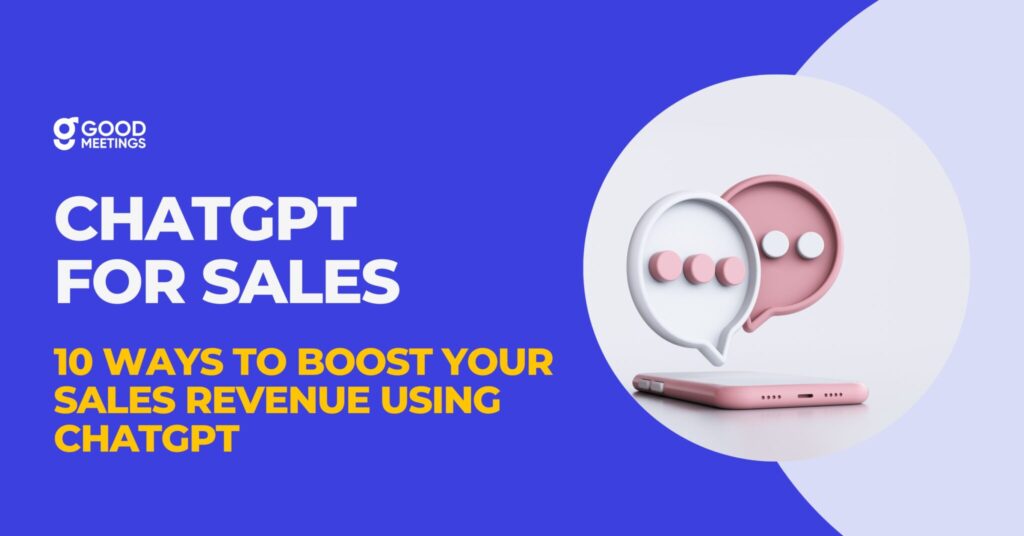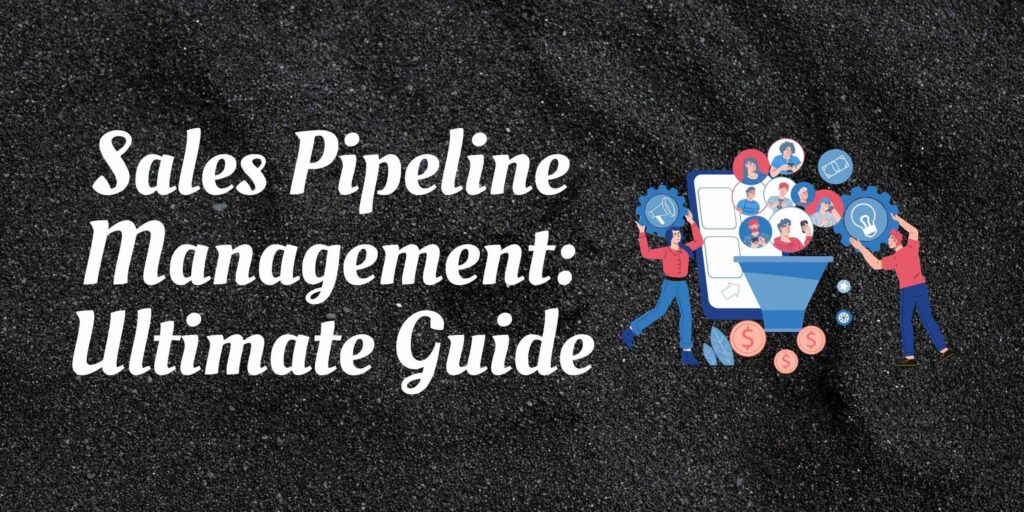
Sales Pipeline Management is the process of keeping track of every sales opportunity as it traverses through the entire sales journey from prospecting to closure. Every sales pipeline is a reflection of the sequence of actions that a sales rep must take to bring a deal to closure. It may be defined uniquely for every organization based on their sales processes. The pipeline visually depicts the opportunities at every stage.

The stages of a sales pipeline and the activities taken up in each stage may vary from organization to organization. For example, in many B2B organizations, the proposal stage is split into two stages – the Demo and the Limited Period Free Trial. Additionally, there could be activities around customer onboarding, usage monitoring, and retention post-closure of a sale to ensure that the customer consistently finds value in the product for a longer period of time.
To manage a sales pipeline, the number of opportunities and the revenue associated with each stage are closely tracked. This helps in estimating the effort and planning the resources required, figuring out the deals that are most likely to close, and predicting the impact on revenue for the organization.
Sales Pipeline & Sales Funnel: Same or different?
Often the terms sales funnel and sales pipeline are interchangeably used. However, they are not the same. A sales funnel represents the number of opportunities that are at each stage of the sales journey at any given point in time. By inference, they also indicate the average conversion rate at each stage. For example, company A may have 100 prospects, 10 qualified leads, and 1 win. This would mean that to clock 25 successful deals in a quarter, a sales rep would have to generate around 2500 prospects.
Contrary to the popular opinion that the sales funnel is a sharp inverted V, a well-planned sales process can lead to a sales funnel that is similar to a wide-brimmed champagne glass. An inverted V represents high drop-offs from one stage to another. A wide-rimmed champagne glass has a steeper curve representing low drop-offs. When prospecting is done well, the drop-offs to the qualifying stage will be low and the same can be said about subsequent stages.
In order to ensure that conversion rates at each stage improve and leaky buckets across the funnel are fixed, it becomes critical to amp up the activities taken up at every stage. Whether it is sending personalized emailers or ensuring a great demo experience, the steps taken to successfully move a prospect from one stage to another fall under the ambit of sales pipeline management.
You may want to read about 11 key sales performance metrics.
The 6D framework to build your sales pipeline
1. Discover the stages of your sales process
This is the most important, chaotic but the most exciting part of building the sales pipeline.
You get a huge board and start sticking the names of all your leads and customers using sticky notes. Now begin sorting these names into buckets. These buckets will depend on the stage of communication they are with you in.
- If you have only emailed or connected with them on a call, you could sort them under one bucket. You could name this bucket ‘Prospecting’.
- If you have delivered a pitch or a demo to them, you can sort them under the bucket ‘Proposal’, and so on…
After completing this activity, you will have all your clients segmented under various buckets. You will have the bucket names and the number of clients under that bucket.
2. Designate your sales activities to these stages
Now mention the sales activities that you do under each bucket. For example, under the proposal bucket, you would have activities like a sales pitch and product demo. This listing will give a clear view of the activities to be performed by the sales rep under each bucket.
3. Decide the pipeline capacity
Pipeline capacity refers to the number of deals in your pipeline.
This is another important step. As a sales manager, you should be able to estimate your pipeline capacity efficiently. In order to do so, you have to take the following three points into consideration:
1. Target Revenue
2. The efficiency of your sales pipeline
3. The number of sales reps at different levels that you have (or need to hire).
For example, imagine that your annual target revenue is 100 Mn USD and an average deal value is around 1 Mn USD. Hence, to hit the target, you must successfully close 100 deals.
Considering the following ratios:
1:5 – Deal closure: Proposal, 1:10- Proposal: Qualifying
Suppose, we have 5 sales reps, each will have to close 2 deals per month, deliver 2 proposals per week, and have 20 qualifying meetings per week. Based on this data, you may allocate targets to your sales reps based on their past performance or you may hire more to hit the quotas in time.
Read about 7 qualities of high performing SDRs.
4. Decide the length of your sales cycle
A short sales cycle has many advantages. You close deals faster. Dormancy of deals is reduced to a large extent. However, it is not always possible to have a short sales cycle.
Some products can be sold in days while others take months. The length of your sales cycle depends a lot on the complexity of your product, the uniformity of the sales process w.r.t customers, and whether your leads are inbound or outbound.
If your product is complex and needs a lot of explaining and demonstrations before the customer can be convinced to buy it, your sales cycles will be longer.
Similarly, if you do not follow the same sales process across customers, the sales cycle length will differ from customer to customer. It could lead to process adoption delays, miscommunication, and variation in sales cycle length.
Lastly, if your leads are inbound, you will not spend much time prospecting them and your sales cycle will be considerably shorter. Over time as you refine your processes, your sales cycles will become shorter.
5. Delete the dormant deals
Deals go dormant over time and become just a number in a sales pipeline. If not removed at regular intervals, these dormant deals can cause major overheads. Cleaning up the sleeping deals will lead to accurate sales forecasting and better planning.
Or check whether it is worth to start re-engaging the lost leads.
6. Define the pipeline metrics
You have done all the work. You created your sales pipeline with all the detail. Now is the time to monitor and observe how this pipeline is working for you. To monitor and diagnose you need some metrics. Here is the list of the most common metrics used to monitor the sales pipeline:
- # Deals in the pipeline
This figure denotes the number of qualified deals in your pipeline. It helps you in determining the efforts that you need to bring these deals to closure. It is also useful in determining the number of deals that could be closed successfully.
- Average deal value
This metric indicates where you may focus your efforts. Any deal that has more value than this number need your attention and focus. A series of deals that have a value smaller than but around this number could fetch as much value a single high-valued deal.
- Average win rate
This metric helps in benchmarking employee performance. It also helps in predicting revenue. If you know the total number of deals in the pipeline, then you may calculate the revenue by multiplying the number of deals with the average deal value and win rate. Average win rate can be defined as the number of deals closed successfully divided by the number of opportunities in the pipeline.
- Sales Velocity
This number represents how quickly the opportunities convert in your sales pipeline. This metric can be calculated as:
- Sales cycle length
This number represents the duration between getting a prospect in the sales pipeline and closing the deal with them. Over time, you should refine your processes to reduce the value of this metric.
How to manage the sales pipeline?
1. Periodic reviews
Periodic reviews ensure that everyone is aligned and on the same page. The periodicity of these meetings can be decided based on your sales cycle length. Generally, weekly reviews are considered the most effective in aligning the team. These reviews build accountability and self-correct any problems in the sales pipeline.
2. Never let the pipeline go dry
The number of opportunities at the input of the sales pipeline might look enormous. However, considering the drop-offs at the various sales funnel stages and the efficiency of the sales team, the input number may not be sufficient to attain the target revenue.
3. Automate the mundane tasks
Use CRM tools to automate mundane tasks. You may use CRM for scoring the leads, prioritizing them, automatic emails and follow-ups and creating proposals. This frees up the sales representatives to focus on moving the leads from one stage to another in the pipeline.
You could use one of the popular CRMs like HubSpot, Zoho, Insightly, Pipedrive, SalesMate, Freshworks and Agile.
4. Collaborate
Ensure that all the teams impacted by the changes in the sales pipeline are in sync with each other. For example, you should ensure enough visibility into the sales pipeline for the marketing, finance, strategy and sales team. It is only when these teams work in tandem with each other that you can see the benefits of the sales pipeline fructify.
If you have a remote team, read 10 easy hacks to improve sales productivity in remote teams.
5. Track and report your metrics
If you do not measure something, you cannot improve it. Using the metrics stated in the former section, keep monitoring the health and status of your sales pipeline. Create a monthly report of these metrics and send it to the respective stakeholders. Schedule retrospective meetings to improve these metrics further.
Building a sales pipeline gives you an insight into your sales process. Monitoring and tracking the sales pipeline metrics ensure that you improve it to come up with a refined and more predictive pipeline every time you conduct the retrospective meeting. The pointers and the 6D framework mentioned above arm you with the tools required to build a sales pipeline. Go ahead and build your sales pipeline today.





